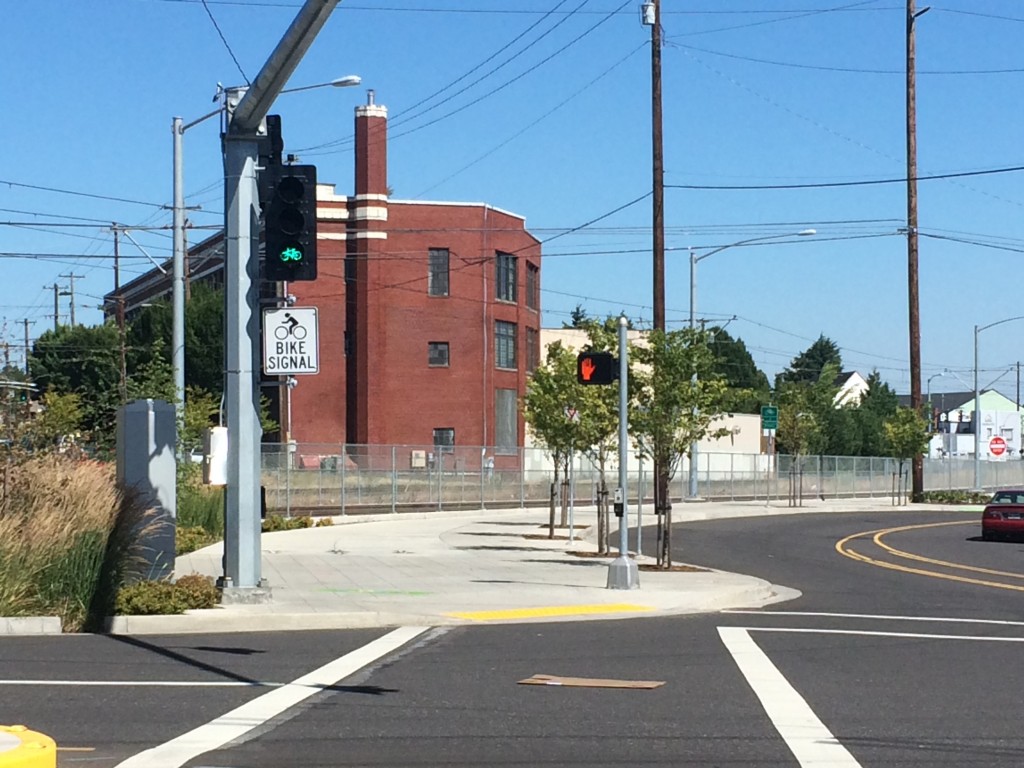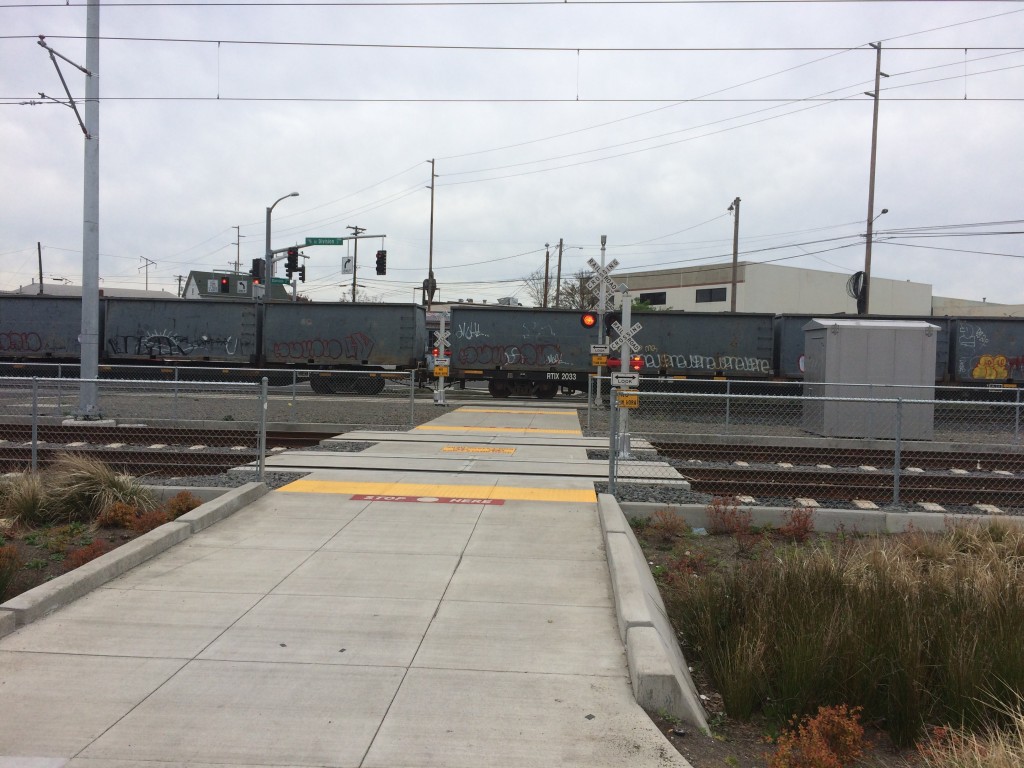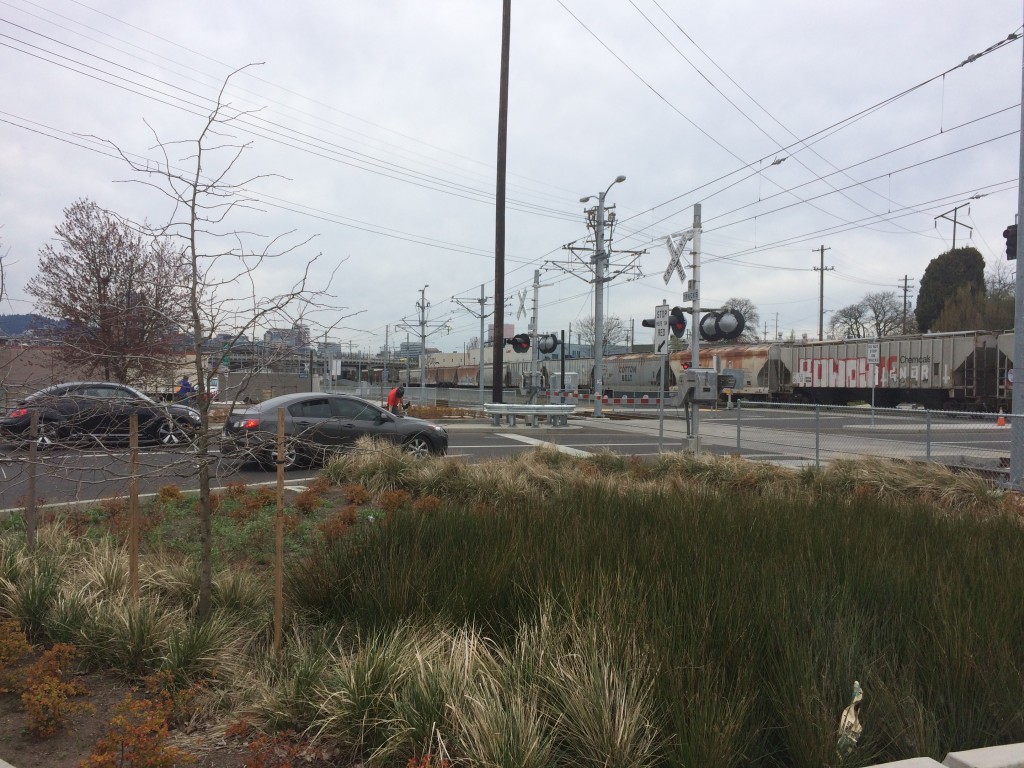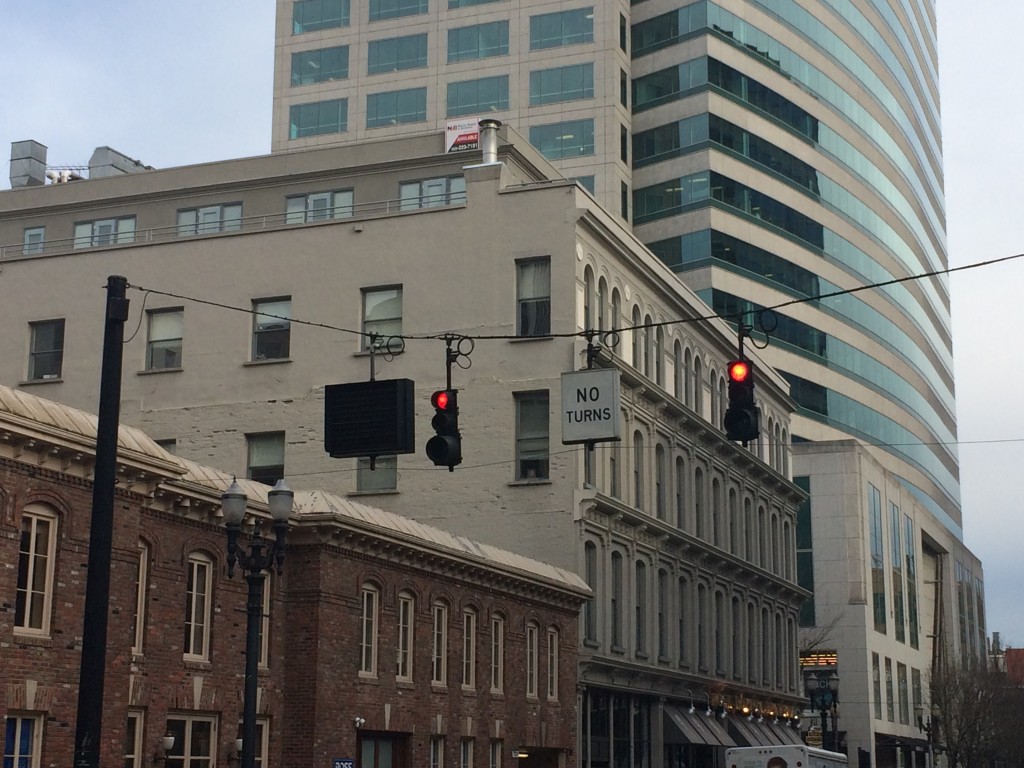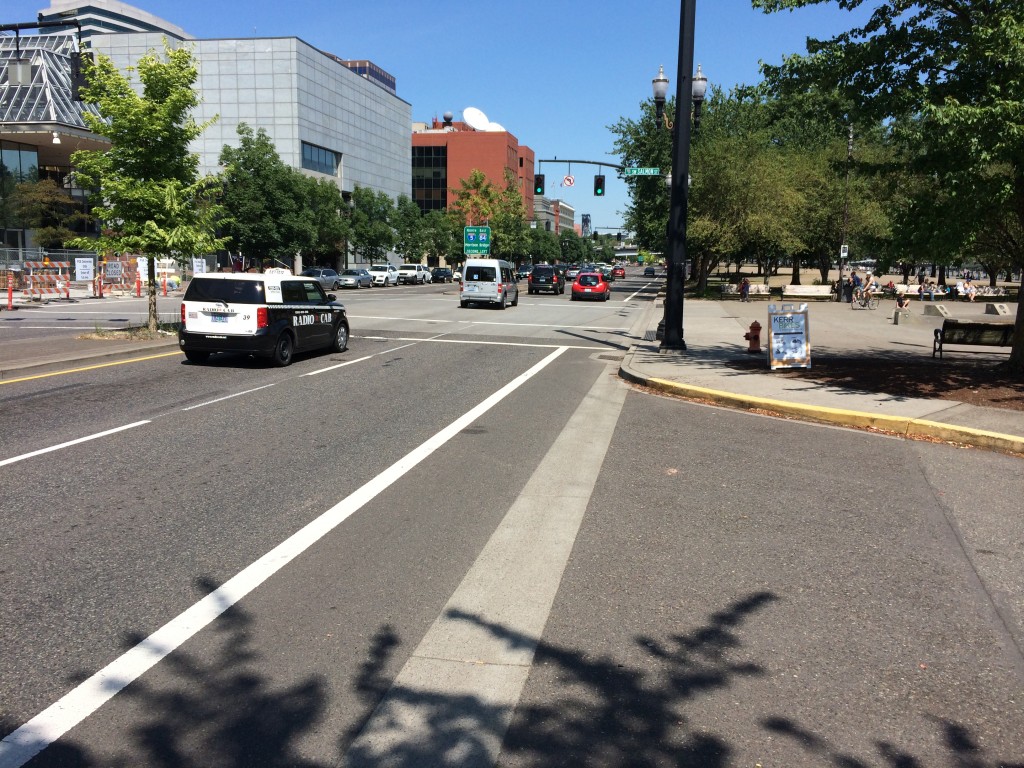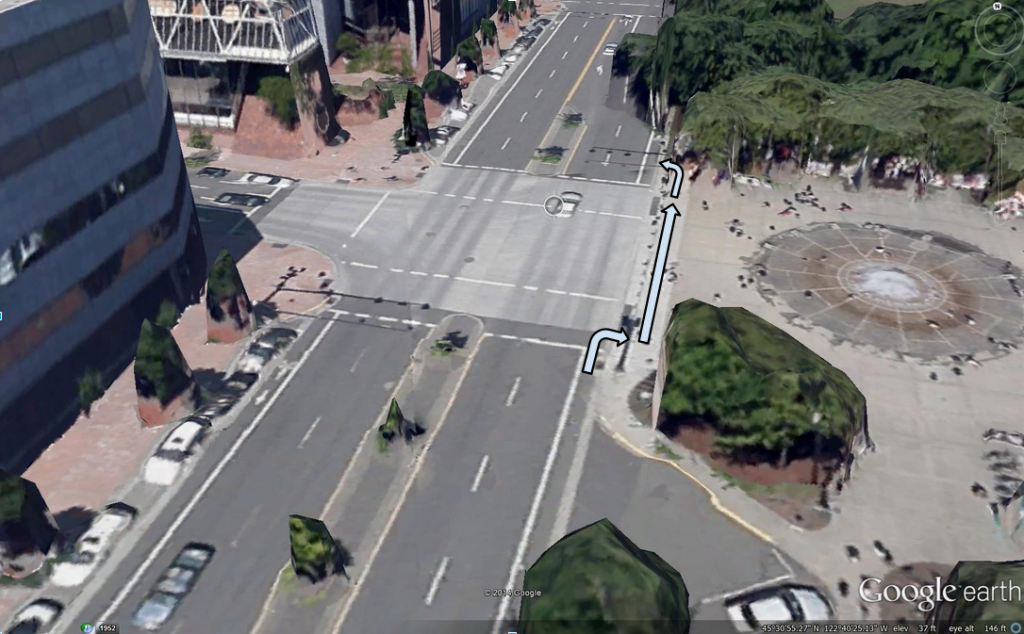I have been asked by some attendees of our bicycle legal clinics about the legal operation of the crossings along the new Orange Line MAX in Portland, specifically the crossings at SE 12th Avenue and SE 8th Avenue where there are both pedestrian crossing signals and bicycle signals.
At these crossings, if nobody triggers the pedestrian crossing signal by pressing the button then bicyclists get a green bicycle signal but the pedestrian crossing signal remains a red “do not cross” hand.
ORS 814.410(2) Unsafe operation of bicycle on a sidewalk gives bicyclists operating on the sidewalk the same rights and responsibilities as pedestrians.
ORS 814.400 Application of vehicle laws to bicycles gives bicyclists operating on a “public way” (not even on the roadway) the same rights and responsibilities of a any other vehicle operator under the vehicle code.
ORS 814.010(6)(b) Appropriate responses to traffic control devices requires that “[a] pedestrian shall not start to cross the roadway in the direction of a signal showing a Wait or Don’t Walk or any other symbol… indicating that the pedestrian may not proceed.”
However, ORS 811.260(3) Appropriate responses to traffic control devices allows “[a] bicyclist facing a green bicycle signal may proceed straight through or turn right or left unless a sign at that place prohibits either turn.”
So, in the situation described and shown in the photo above, we are left with contradictory signals due to a bicycle’s hybrid legal status as a vehicle beholden to both the vehicle code and pedestrian laws.
ORS 814.020 Failure to obey traffic control device contains an exception for when a pedestrian disobeys a signal at the direction of a police officer, but there is no exception for the direction of a conflicting traffic control device.
Unfortunately this problem does not have an easy legal answer. The laws are in conflict with one another. The only solution is a practical one: press the button to trigger both the green bicycle light and the pedestrian crossing signal.

